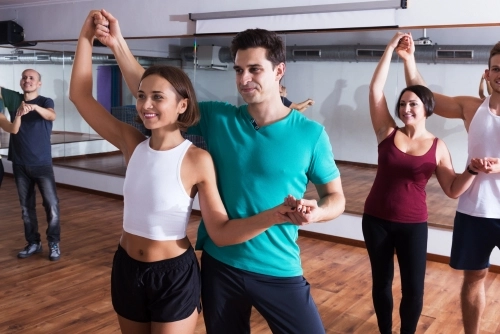An Unbiased View of Dance San Francisco
Wiki Article
The Ultimate Guide To Dance San Francisco
Table of ContentsMore About Dance San FranciscoThe 5-Minute Rule for Dance San FranciscoAll about Dance San FranciscoSome Ideas on Dance San Francisco You Need To Know
Allow's consider Salsa dancing and songs as a large Tree that resembles this: Salsa is danced worldwide while lots of technical facets of the dancing coincide across designs (6 steps over 8 beats danced on a quick-quick-slow or slow-quick-quick rhythm), there are several "characteristic" functions of the major designs of Salsa that differentiate one from the various other.Couples taking part in a Gambling enterprise Rueda dance all relocate unison as called by a Leader. Distinct features of Cuban design salsa are round turn patterns (with "break back" actions on matters 1 and 5) as well as body language inspired by traditional Afro-Cuban folkloric dancings. Distinct functions of Cali style salsa fasts and detailed footwork, danced with a solid hand hold link between partners.
The origins of the style are a subject of debate, however it is claimed that New york city style Salsa dance came from the 1960's as a result of the influx of Latin American emigrants after the Cuban Transformation (salsa dancing sf). Eddie Torres is the most well known New york city design dancer, being almost generally credited with popularizing the design to dance centres beyond New York
The basic rhythm of "On-2" is slow-quick-quick. The "youngest" of the designs of Salsa, L.A (https://www.intensedebate.com/profiles/dancesff0aaee7575). Design (some people have called it "West Coastline" style) came to be popular in the 1990's and has its origins in ballroom (Mambo, Swing and Cha, Cha, Cha). Transform patterns lead and follow strategies are greatly affected by these styles, with the Cross Body Lead being the keystone of the style
The Buzz on Dance San Francisco
Style are implementation of turn patterns and figures in the "port", with the break actions on counts "1" and "5". While Salsa music has strong beginnings in Cuban, Colombian and Puerto-Rican folkoric traditions, it can not be discounted that all Afro-Latin and Latin American societies have added to modern Salsa songs as we know it today.


Dance San Francisco for Beginners
identifying features of Salsa music are: 4/4 time trademark, Boy Clave and Tumbao rhythms, Montuno Piano Unless you have a background in music, the above 3 features most likely indicate absolutely nothing to you. A simpler means to describe Salsa music is exactly how it does NOT seem like other kinds of Latin American music.
It's time for lessons. With a lot of studios available and you can find out more different designs to pick from, where does a complete beginner start? The majority of brand new dancers choose to discover L.A. "On-1" design slotted Salsa designs are the most widespread in North America (with some exceptions of some metropolitan centres that still mostly embrace Cuban and Puerto Rican designs) and L.A.
.A. Style will rapidly educate you the fundamentals of Salsa timing, weight transfer and turn pattern execution. Numerous dancers, as soon as they've had a year or 2 of dance L.A. Design Salsa under their belts, "button" to New york city design in order to expand their dance vocabulary; but numerous dancers make a decision to stay with just one design of Salsa and enjoy their time on the dancing flooring in that specific design. salsa dancing sf.
Design and New York Style all being danced in the same club, with a lot of the professional dancers having the ability to change from one style to the other from one song to the following. salsa dancing sf. Regardless of which design you choose it's essential to adhere to that design up until you're extremely comfortable with the principles of timing, body rhythm and foundation relocation execution prior to taking into consideration "changing" designs (if you intend to)
When you start lessons prepare to dedicate energy and time to finding out how to dance as a whole it takes a full rookie (i. e., a person with little or no dance experience) concerning 6 months of proactively taking lessons and heading out and exercising at the very least two times a week to reach a point where pattern execution begins to feel "all-natural".
Report this wiki page